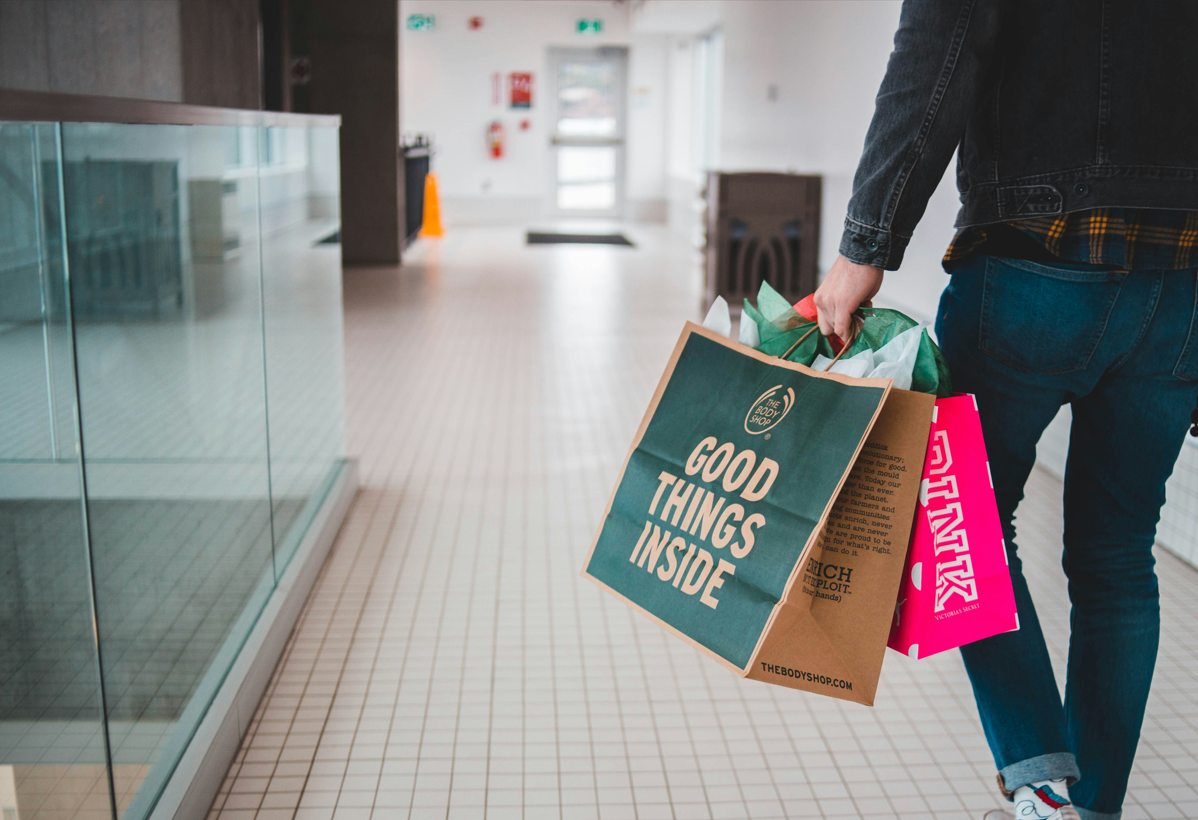Most crucial consumer behavior trends in Germany in 2025
Written by
Kinga EdwardsPublished on
Discover the key consumer behavior trends shaping Germany in 2025. Stay ahead of the curve and understand what drives today’s shoppers.

If you’re trying to understand consumer behavior in Germany in 2025, you’ll notice one thing fast: people are tired, cautious, and very price-aware. But they’re not giving up. They’re just changing how (and where) they spend. And thus, some customer behavior trends are showing up.
Germans are dealing with a weird mix of emotional calm and financial pressure. They feel mentally strong and personally okay, but look around at the country or economy, and the mood shifts. There’s concern. Inflation still bites. Food and energy bills are stubbornly high.
And while things like political tension or the global economy might seem far away, they’re quietly shaping everyday decisions – from where to shop to what kind of toothpaste to buy.
So, what’s the big picture?
Spending less, expecting more
Let’s be honest: people aren’t in the mood to splurge. The cost of living in Germany has gone up, but wages haven’t followed. That’s the daily grind a lot of consumers are stuck in. So they’re cutting back—but doing it smartly:
- they’re buying less,
- switching to cheaper brands,
- and hunting for promotions wherever possible.
They’re not about giving up. Just are smarter with money.
This shift hits luxury the hardest. Think high-end fashion, fancy electronics, or impulse buys. These categories saw the biggest spending drops. Meanwhile, essentials like groceries, cleaning supplies, and personal care are non-negotiable.
People still spend here, but they watch prices like hawks. And when it comes to groceries, more than a third of consumers actually spent more – not because they wanted to, but because prices forced their hand.
What’s interesting is how this differs across age groups. Gen X and Boomers feel the squeeze most. They’re the ones scaling back. Gen Z and millennials are more optimistic. Gen Z is more likely to spend, especially online. But even they aren’t immune to price hikes, and they’re starting to care more about value than hype.
So, what do today’s consumers want?
It’s pretty simple:
- good quality
- fair prices
- and no nonsense
Brands that get that – brands that speak to what matters right now – have a shot at staying relevant. Those who don’t? They’ll quietly get left behind.
This is where understanding consumer behavior in Germany is essential. Because these aren’t minor changes. They’re foundational. And they’re setting the tone for everything that comes next.
Sustainability? Yes… But not at any cost
Yes, yes – that’s not new that Germans care about sustainability. But in 2025, they’re drawing a line: being eco-conscious shouldn’t mean overpaying.
You’ll see it in everyday habits. People bring reusable bags to the store. They recycle packaging, fix torn clothes, and try to waste less. These actions are real, and they’re part of the broader shift in consumer behavior in Germany.
But when is it time to actually buy something?
The story changes.
Only about 16% to 25% of consumers are willing to pay more for sustainable products. That’s quite a small slice.
Just a few years ago, 35% were open to paying a premium. Now it’s down to 23%. The desire is still there, but budgets are tighter, and ideals don’t always win over price tags.
Still, sustainability does influence buying decisions – just not at the top of the list. Consumers rank things like value for money, practicality, and convenience higher than whether a product is “green.” However, for categories like luxury fashion, up to 56% of Germans say they still consider sustainability in the process.
So what does that mean for businesses?
Don’t show sustainability as ultra-premium and expect applause. Instead, bet on affordable sustainability, make being eco-friendly normal, without inflating prices.
People want better products, not guilt trips. They want to feel good and save money. And that’s a big shift in consumer behavior trends in Germany right now.
Online vs offline: The hybrid shopping mood
If you thought everyone was going full digital in 2025, think again. In Germany, shopping is still a very offline thing, especially for everyday basics.
Groceries, snacks, drinks, shampoo – 85% to 90% of consumers prefer to buy these things in a physical store. It’s what feels familiar, fast, and easy. People say in-store shopping gives them inspiration, better service, and a more enjoyable experience.
And honestly, that’s hard to beat when you just need dinner and dish soap.
Still, online shopping isn’t going anywhere. It’s part of the mix, particularly for apparel, luxury fashion, toys, and home appliances, where over 90% of Germans go online at some point during the buying journey. They might scroll on the couch, compare prices, check reviews, and then decide where to buy.
Younger consumers (like Gen Z) are more online-first, but even they aren’t all-in. For most product categories, they still like having the option to walk into a store. The only clear exception is fashion. That’s where more Gen Z shoppers prefer clicking over browsing racks.
So, online shopping hits hardest when people want:
- A wider selection
- Delivery convenience
- A quick search for something they couldn’t find offline
- Or the comfort of buying on the go (from benchmark 2)
On the other hand, physical stores win for products that are more routine or need to be “felt” before buying.
And that’s one of the most interesting consumer behavior trends in Germany right now: people aren’t choosing sides. They want both.
AI, search, and social media shape discovery
The old days of stumbling across a product in a magazine or store window? Fading fast. In 2025, consumer behavior in Germany is being shaped online by feeds, search bars, and smart algorithms.
First up: social media.
Instagram and TikTok are playing a huge role in product discovery, especially for younger consumers. Scroll a bit and boom – you’ve got an ad, an influencer story, or a “TikTok made me buy it” trend. And it’s working. Fashion and beauty brands in Germany are already seeing higher click-through rates on social media ads than in previous years.
But that doesn’t mean people are ditching search engines. Google still owns the throne. In 2024, it held over 74% of desktop market share and over 92% on mobile. People head to Google when they want answers now: where to buy, how much it costs, which product is best. It’s still the default for serious shopping decisions.
And then there’s AI. The quiet force behind both experiences.
AI-powered recommendations are starting to feel less creepy and more helpful. In fact, 75% of global shoppers say they’re open to AI-generated product suggestions—and German buyers are on board too. What are we talking about? A chatbot offering suggestions, a personalized homepage, or smart filters that “get” your style. AI is just helping people sort through the noise and shop smarter.
Bottom line? Multi-channel, smart, and social discovery – consumer behavior trends include that all too. So, if your product isn’t showing up in the right places (like TikTok, Google, or someone’s AI-curated recommendations) you’re already a step behind.
What businesses need to know (and act on)
Now we can see how consumer behavior in Germany has changed, and in some areas, quite a lot.
But remember, this is just the broad view.
Your specific audience might be responding in their own ways, with smaller habits and deeper preferences that don’t always show up in market-wide stats. That’s why sticking to the same promotions or pricing strategy, without paying attention to what people actually want, is a risky move.
If your business keeps doing the same thing, you will lose people. Not loudly. Quietly. They’ll scroll past, click somewhere else, get interested in something more relevant to them. And you won’t even notice until the numbers start slipping.
So, what should you focus on?
Curate the right products, in the right place
People are spending less, but not on everything. Essentials are in, luxury’s out. Plus, physical stores work well for basics, and e-commerce is perfect for broader ranges. Therefore, offer localized products in-store and a global selection online.
If you’re selling across both channels, don’t copy-paste your product range. Instead:
- use store-level sales data and online browsing behavior to decide what goes where
- rotate stock based on regional demand
- highlight local favorites in store windows or homepages
Get smarter with pricing
Are consumers price-sensitive? So dynamic pricing can help you stay flexible. Major retailers like Amazon are already doing this by adjusting prices based on time, location, or stock levels (from benchmark 1). Not to trick people, just to stay fair and reactive.
What can you do?
- Test dynamic pricing on seasonal items or limited categories.
- Use demand signals like cart abandons or competitor moves to adjust prices in real time.
- Keep it transparent. People don’t mind fluctuation if it feels honest, but they do mind feeling tricked.
Personalize everything
Forget old-school loyalty cards. People want relevant rewards, not generic discounts. Nike’s loyalty program is a great example – data-driven and personal.
You don’t have to be Nike, but the idea stands: give people a reason to care and they’ll keep coming back.
👉 You can start by using past purchase data to segment your customers into simple groups: repeat buyers, one-time shoppers, seasonal browsers.
Then build custom offers or content flows around what they’ve shown interest in.
Own your data
First-party data is your best tool. What do your customers really care about? What are they clicking, buying, ignoring? The more you know, the better you can tailor your product range, your prices, and your messaging.
What if you don’t have clean, useful data yet? Two ideas:
- Start with your checkout and signup flows.
- Make it easy for customers to share preferences or product interests.
Even one or two extra data points can help you serve better content, trigger smarter promos, and understand shifting habits faster than relying on guesswork.
The takeaway? It’s a rethink, not a reset
So, yes, this is what adapting to consumer behavior trends in Germany looks like in 2025.
People want stability. They want good value. They want some joy in the mix, but not at the expense of their budget. They’re cutting back on what feels excessive and doubling down on what feels worth it.
But more importantly, they’re still buying.
They’re just asking more from brands—more transparency, more relevance, more respect for their reality. And this is your opening.
If you’re a business looking to connect with German shoppers in 2025, don’t overcomplicate it.
- Be affordable and meaningful.
- Show up where people are: Google, TikTok, or that neighborhood store.
- Use your data, not guesses.
- Adapt without losing your voice.
This can be your strong starting point.
***


